At documenta, Interdisciplinary Dive into Cuba Thrills Global Art Crowd

Three generations of former students recently collaborated with Neil Leonard, artistic director of the Berklee Interdisciplinary Arts Institute, on an installation that brought the sights, sounds, and tastes of Matanzas, Cuba to life at documenta 14.
Image by Neil Leonard
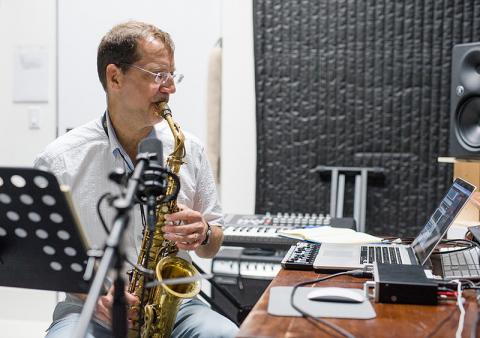
Leonard recorded saxophone works for the documenta project during a Robert Rauschenberg Foundation residency in Captiva, Florida. Alumnus Joe Branciforte B.M. '07 used the recordings in a stereo album version and a quadraphonic surround sound live installation version for documenta.
Image by Mark Poucher
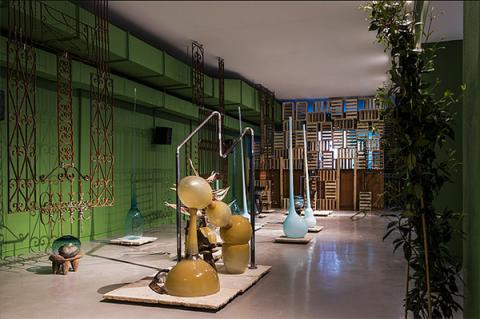
Maria Magdalena Campos-Pons, Leonard's longtime partner in art and in life, displayed works of blown and cast glass, along with video and materials made from coconut tree bark, shells, stone, and handmade paper at documenta in Athens.
Image by Angelos Giotopoulos

Leonard performed with Los Muñequitos de Matanzas, the legendary Afro-Cuban rumba and folkloric music group, which celebrated its 65th anniversary at documenta. From left to right: José Andro Mella Bosch, Diosdado Enier Ramos, Luis Cancino Morales, Eddy Espinosa Alfonso, and Leonard.
Image by Doris Sommer

Percussionist Eddy Espinosa Alfonso of Los Muñequitos de Matanzas pours energy into a performance at documenta.
Image by Ralph Schwerdtfeger
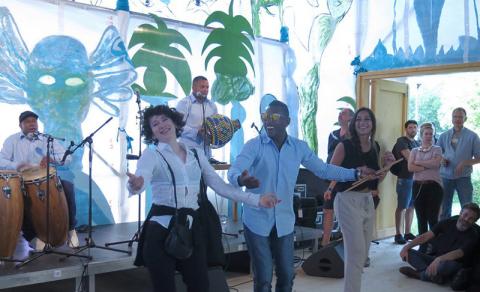
Attendees at documenta dance to the sounds of Leonard and Los Muñequitos de Matanzas.
Image by Neil Leonard

Art lovers at documenta celebrate the sounds and culture of Matanzas, Cuba, in dance.
Image by Mathias Voelzke
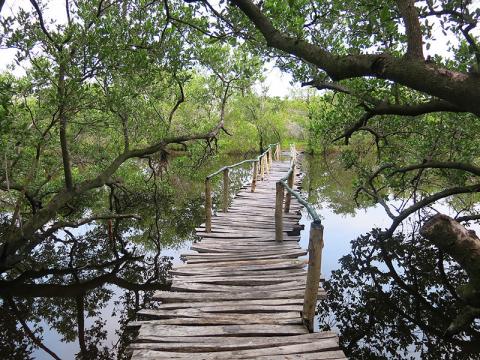
Nikhil Singh B.M. ’17, who did mixing work on the project, calls it “an extraordinary learning experience.”
Image by Neil Leonard
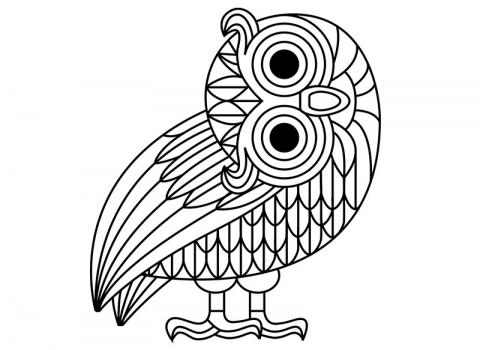
Sometimes labeled "the museum of 100 days," documenta was established as the largest and most ambitious international exhibition for contemporary art after World War II.
Official logo of documenta 14
Occurring once every five years in Kassel, Germany, documenta was established as the largest and most ambitious international exhibition for contemporary art after World War II. In reaction to the cultural oppression of Nazi-era Germany, founder Arnold Bode created documenta as a global outpost for artists to rethink and renew discourse around humanity, politics, race, sexuality, aesthetics, and the future of art itself. The first documenta featured works by Pablo Picasso and Henri Matisse, among others, and the event, sometimes labeled "the museum of 100 days," has since showcased many of the world's top artists.
This year’s documenta 14, themed Learning from Athens, marked the first time that most participating artists showed their work not only in Kassel but in the titular Grecian city as well. Among the internationally acclaimed artists presenting their work was Neil Leonard, artistic director of the Berklee Interdisciplinary Arts Institute, who enlisted help from several talented Berklee alumni to bring the sounds of Matanzas, Cuba, to the global art exhibit.
As part of the exhibit, Leonard, a saxophonist, performed with the renowned Afro-Cuban rumba and folkloric group Los Muñequitos de Matanzas. The pioneering group celebrated the 65th anniversary of its founding in a series of concerts with Leonard at documenta. The venue for the performance in Kassel was part of Leonard's exhibit: “Bar Matanzas, ”a buoyant pop-up environment featuring translucent paintings and furniture designed by Clara Porset, a Matanzas-born interior designer. The setting was created to delve into the music, design, dance, beverage, and culinary culture of Matanzas, known as the “Athens of Cuba.”
In addition to "Bar Matanzas," Leonard also presented a 10-channel audio installation, titled "Matanzas Sound Map," based on ambient field recordings of the Cuban countryside and the chatter of former stevedores (the occupation of the founders of Los Muñequitos de Matanzas), among other sounds. Leonard also recorded saxophone works for the project during a Robert Rauschenberg Foundation residency in Captiva, Florida.
Collaborating across Generations
For the sound installation, Leonard collaborated with Berklee alumni Joe Branciforte B.M. ‘07, Nikhil Singh B.M. ’17, and Nassos Vynos B.M. ‘94. Branciforte undertook recording and mixing work, while Singh also did some mixing. Vynos served as manager, handling pre-production, on-the-ground logistics in Athens and Kassel, audio equipment installation, live mixing, and other aspects of the project, which was made possible thanks in part to support from Robert Nagle, founder of Ornent Analytics.
In Athens, María Magdalena Campos-Pons, Leonard's longtime partner in life and in art who was born in Matanzas, presented visual elements for the "Matanzas Sound Map" exhibit, including blown and cast glass, video projection, handmade paper, coconut tree bark, shells, and stone. The documenta projects follow another Cuba-inspired collaboration from the couple last year: a multisensory exhibit at the Peabody Essex Museum conjuring the spirit and history of Cuba’s sugar trade.
Singh says he didn’t know much about Cuban music prior to working on the project but found it to be “an extraordinary learning experience.”
“It’s in keeping with the culture of documenta, which is all about the current,” Singh says, adding, “In terms of working with arts beyond music, working with Neil was illuminating.”
The exhibition documenta 14 continues through September 17.
